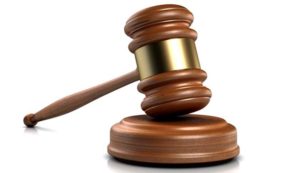
The Indian legal framework, a piece of world’s biggest majority rules system, is extremely old to take after. Ideal from the monarchical manage to the British period and the cutting edge arrangement of free India, the Indian legal framework has constantly attempted to look for equity for the honest and discipline for the liable. The cutting-edge legal framework controls a custom-based law arrangement of lawful purview. The laws are systematized, and distinctive sorts of discipline are given relying on the wrongdoing of the offender.

How about we investigate how the Indian legal functions. There are different levels of legal bodies in India. In the event that we take a gander at the chain of importance, it is as per the following:
- The Supreme Court.
- The High Courts.
- The District Courts.
- The Village Courts/Panchayats.
Every one of these courts has their wards and are to take the laws as per the Constitution of India. It is their obligation, as commanded by the Constitution, to be its guard dog. They do as such by calling into investigation any demonstration of the council or the official, who generally, are allowed to establish or execute these, from exceeding the limits set for them by the Constitution. The Indian legal framework is autonomous from administrative and official bodies in India.
How about we now investigate the elements of the courts as specified above and their purviews:
The Supreme Court of India
The Supreme Court of India is the most noteworthy legal body in India, having ward all finished India. It has been set up under Part V Chapter VI of the Indian Constitution. It includes one Chief Justice and 30 Judges, the choice of whom is done through the collegium framework. Article 124-147 of the Indian Constitution portrays the working and elements of the Supreme Court of India. The principle capacity of Supreme Court is to audit the judgment given by the High Courts; be that as it may one can specifically record a request of in the Supreme Court, as expressed in Article 32 of the Constitution.
The High Court
At the show, there are 24 High Courts arranged in various states and union regions. The High Courts have their purviews restricted to their related states or union domains. As per Article 141 of the Indian Constitution, the High Courts will undoubtedly take after the requests of the Supreme Court and their rules. An applicant can speak to a High Court according to article 226 of the Constitution. The most seasoned High Court in India is the Calcutta High Court.
The District Courts of India
The area courts are built up by the state governments in an alternate locale of the states relying upon the populace and number of cases. The high courts go about as the guard dog for the elements of area courts in India. The locale courts are furnished with one region judge and furthermore various right-hand judges relying on the workload of the specific court
Issues with the Indian legal framework
Regardless of the autonomy of the law from the official and administrative bodies, the Indian legal framework faces a lot of issues. We will now examine a couple of issues that the Indian legal framework faces.
The Real issues that the Indian legal framework faces are:
- The pendency of cases.
- Defilement.
- The absence of straightforwardness (especially in the arrangement of judges).
- Undertrials of the denounced
- The absence of data and association among individuals and courts.
Defilement:
Like alternate mainstays of vote based system, the official and the authoritative, the legal as well (in a few occasions) has been found to participate in defilement. There has not been set up any arrangement of responsibility. On account of legal procedures, even the media can’t give a legitimate and clear photo of the debasement situation. The media is by all accounts more centered around uncovering debasement in different fields, particularly the official. A clergyman taking a fix or disseminating cash amid races may turn into a feature, yet a court assistant taking a fix and adjusting the date of the trial stays unnoticed.
According to the protected arrangement, there is no arrangement yet to register a FIR against a judge who has taken fix without taking the authorization of the Chief Justice of India. Clearly, going to the CJI, looking for his authorization, and after that enrolling a FIR isn’t what a poor man will want to do. This will end up being more costly and tedious for him, other than the court and legal advisor’s costs.
The Professional egotism of the judges whereby judges don’t get their work done and touch base at choices of grave significance while the overlooking point of reference or legal standard postpones equity and adds to trial’s spam. In 2011, Soumitra Sen, a previous judge at the Calcutta High Court turned into the primary judge in India to be reprimanded by the Rajya Sabha claimed for misappropriation of assets.
Conclusion
There is no uncertainty upon the validity of the Indian legal framework. It is one of the biggest legal frameworks around the globe having a law for a wide range of criminal exercises. In the event that we take a gander at the history, the Supreme Court, since its inaugural sitting on 28th of January 1950 has conveyed more than 25000 revealed judgments. In any case, the issues of defilement, pending cases, the absence of straightforwardness in the law can’t be evaded. Subsequently, if the legal framework expels these excesses, we may see Indian legal framework as the best legal framework on the planet. Likewise, the confidence of the basic individual in legal might be reestablished before it’s totally lost.
The Indian Jurist is a legal news and analysis portal, which aims to be your one-stop resource point for all your needs with regard to developments in the legal sphere. We intend to extensively cover legal news, resources and developments from the Supreme Court and High Courts updates from law firms and in-house legal departments of corporate, legislative updates and from law schools across the country.
